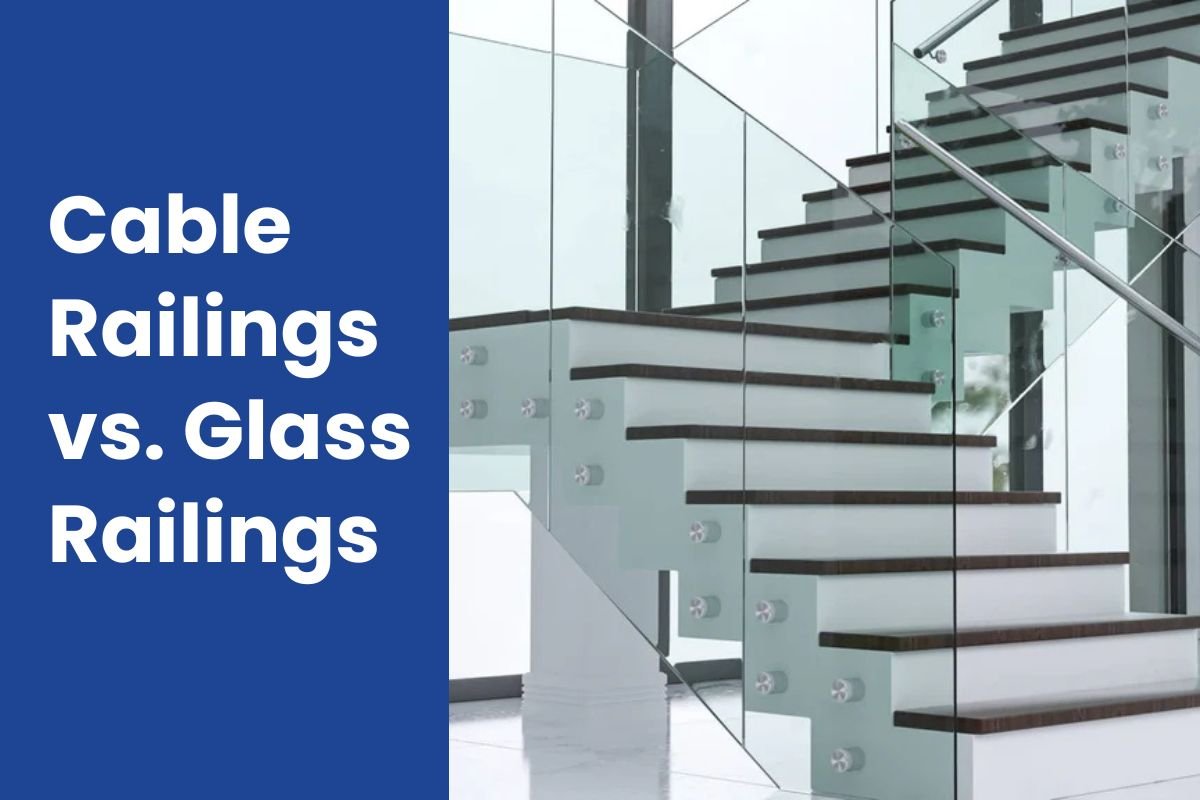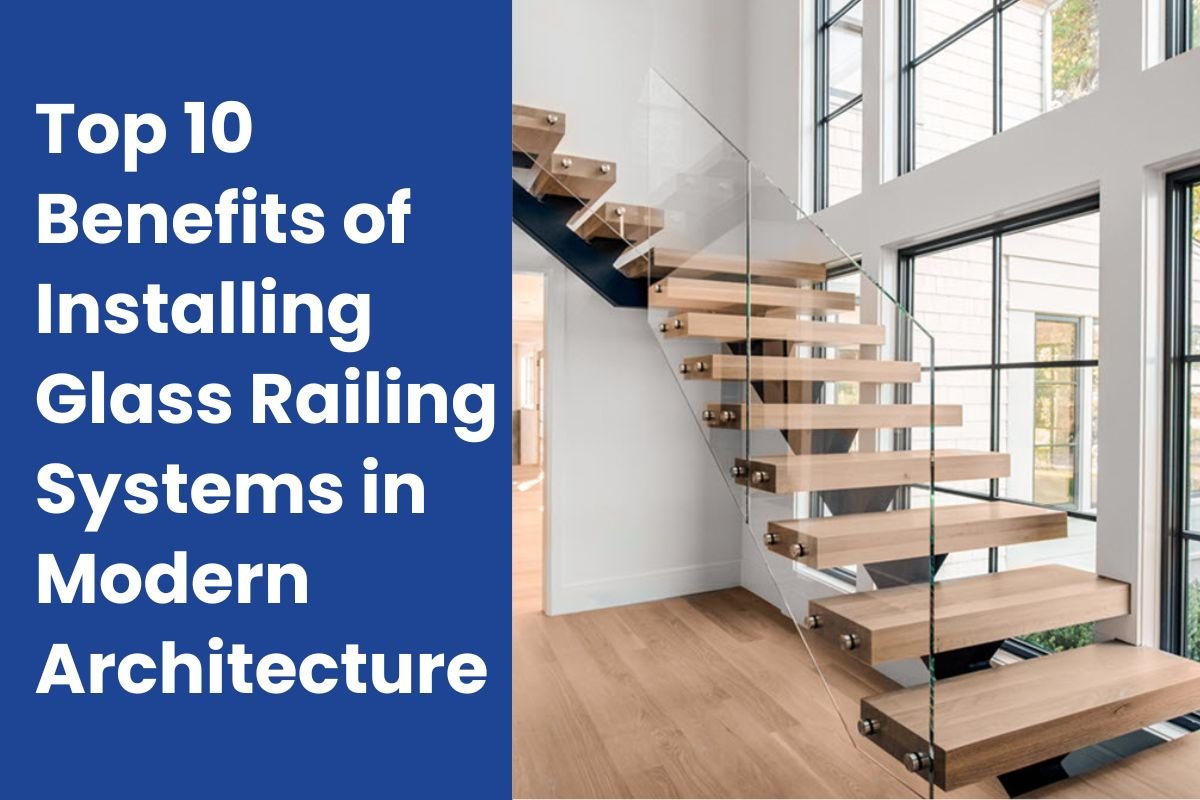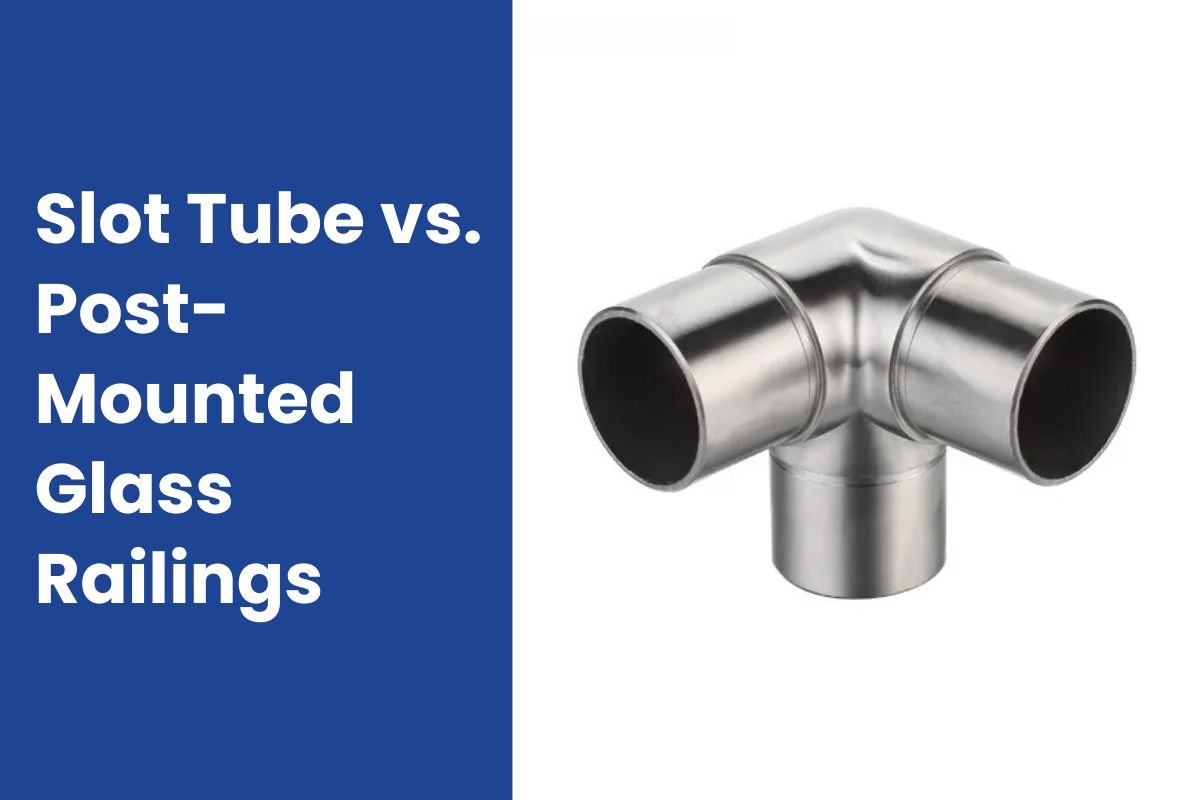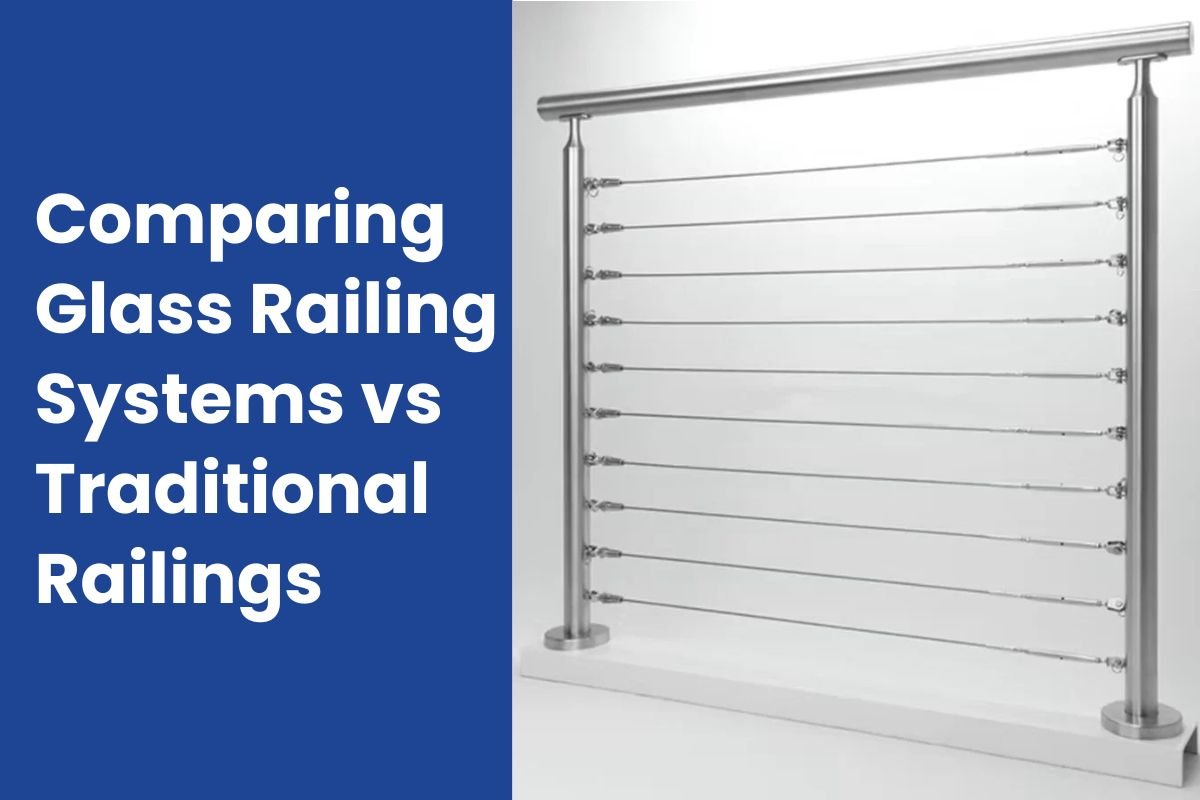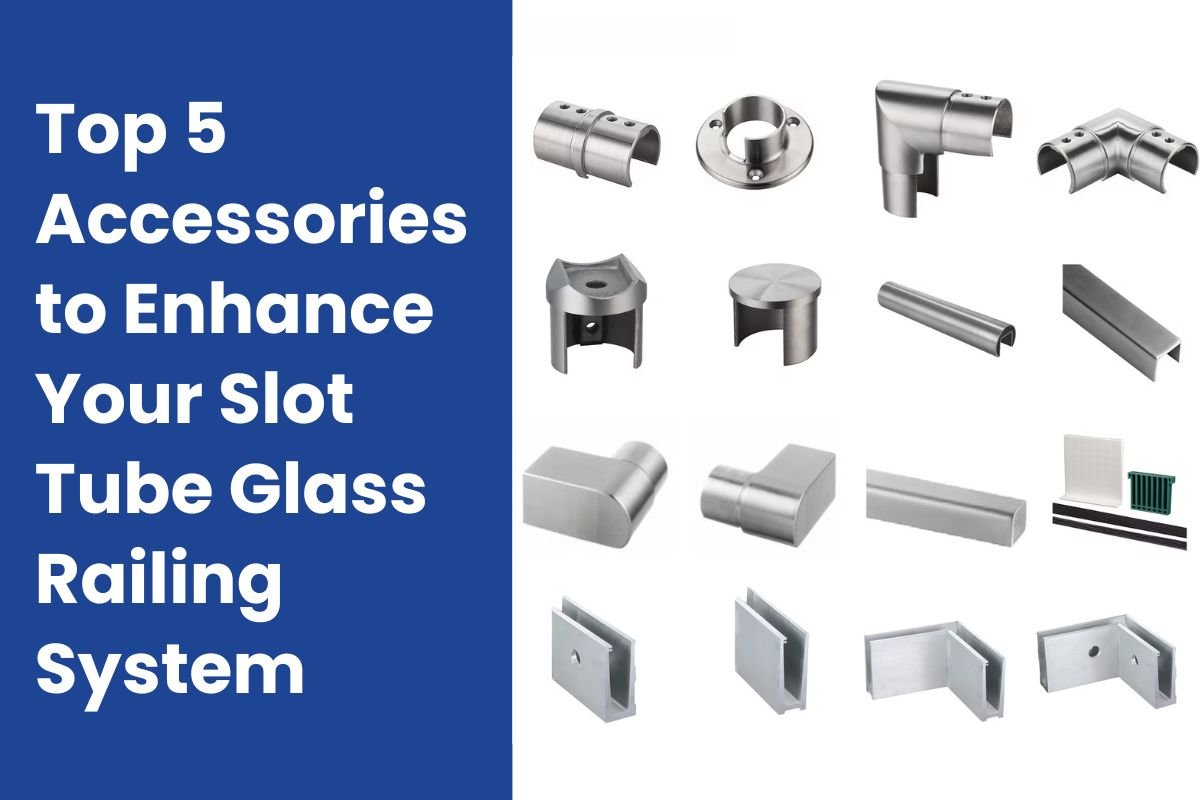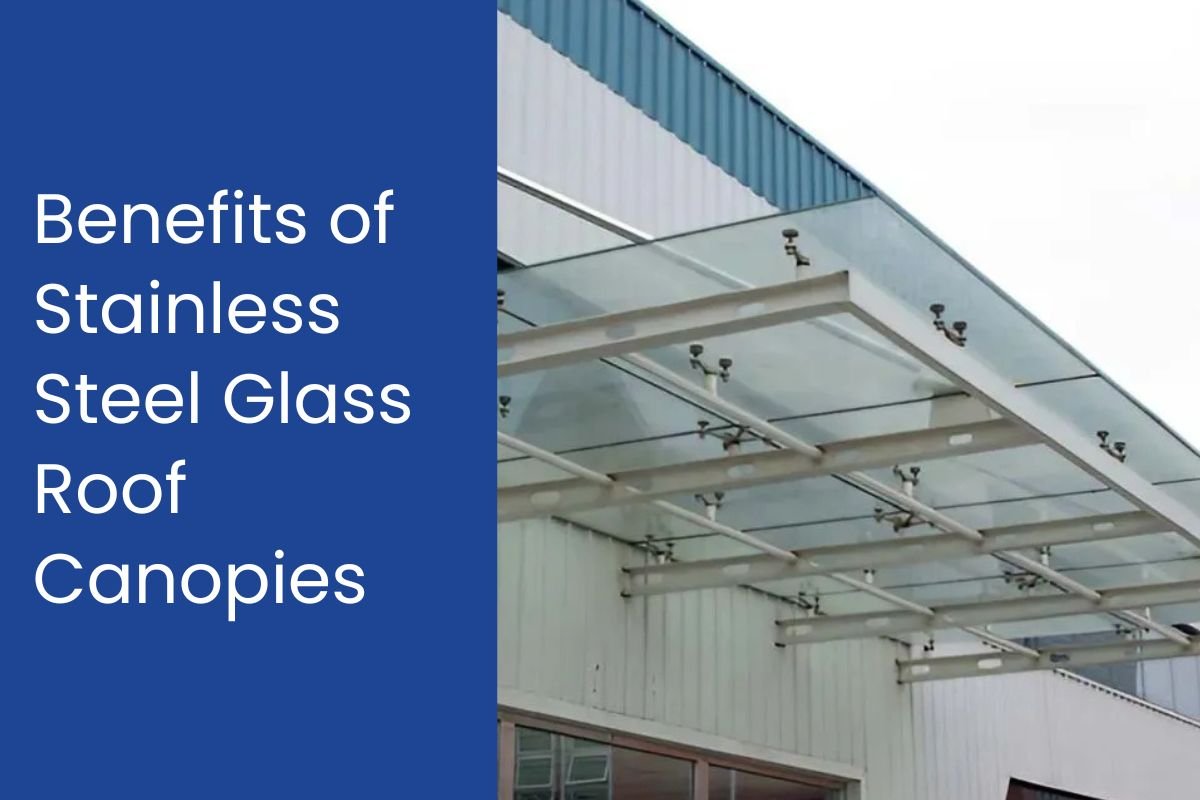When it comes to modern railing systems, cable railings and glass railings are two of the most popular choices for homeowners and designers alike. Both options offer unique aesthetics, functionality, and durability, making them ideal for various applications, from balconies to staircases. However, choosing between the two can be challenging without a detailed comparison. In this blog, we’ll dive deep into the pros, cons, and key differences between cable railings vs. glass railings to help you make an informed decision for your next project.
What Are Cable Railings?
Cable railings are a contemporary railing system that uses horizontal stainless steel cables supported by posts to create a sleek, minimalist look. These railings are known for their unobstructed views, making them a favorite for decks, balconies, and outdoor spaces.
Key Features of Cable Railings
- Material: Made from high-quality stainless steel cables and posts.
- Design: Minimalist and modern, offering a clean aesthetic.
- Visibility: Provides an open view, perfect for scenic locations.
- Durability: Resistant to rust, corrosion, and harsh weather conditions.
For more information on stainless steel railing systems, visit URAILING’s Stainless Steel Railing Systems.
What Are Glass Railings?
Glass railings are a stylish and functional option that uses tempered or laminated glass panels supported by metal frames or clamps. These railings are ideal for modern homes and commercial spaces, offering a seamless blend of safety and elegance.
Key Features of Glass Railings
- Material: Tempered or laminated glass with stainless steel or aluminum frames.
- Design: Sleek and contemporary, enhancing the overall aesthetics.
- Visibility: Provides a clear, unobstructed view.
- Safety: Tempered glass is highly durable and shatter-resistant.
Explore URAILING’s collection of Glass Railing Systems for more details.
Cable Railings vs. Glass Railings: Head-to-Head Comparison
To help you decide, let’s look at these railing systems side by side.
| Feature | Cable Railings | Glass Railings |
|---|---|---|
| Design Style | Minimalist, industrial, modern | Sleek, luxurious, contemporary |
| View | Open, but cables can be visible | Crystal-clear, unobstructed views |
| Durability | Highly durable, resists corrosion with proper stainless steel | Strong but requires tempered glass & hardware |
| Maintenance | Low—occasional tightening & cleaning | Higher—frequent cleaning for smudges & dust |
| Installation | Requires precise tensioning | Heavy panels need professional installation |
| Cost | Moderate | Higher (due to tempered glass and hardware) |
| Safety | Safe with correct tension; may need vertical cables for kids | Very safe, panels prevent climbing |
Design & Aesthetic Appeal
Cable Railings deliver a modern, industrial look with thin cables creating horizontal lines. They allow for a more traditional or rustic frame material such as wood or metal, blending well with various architectural styles. Cable railings emphasize horizontal sightlines and create a less obtrusive barrier compared to traditional balusters.
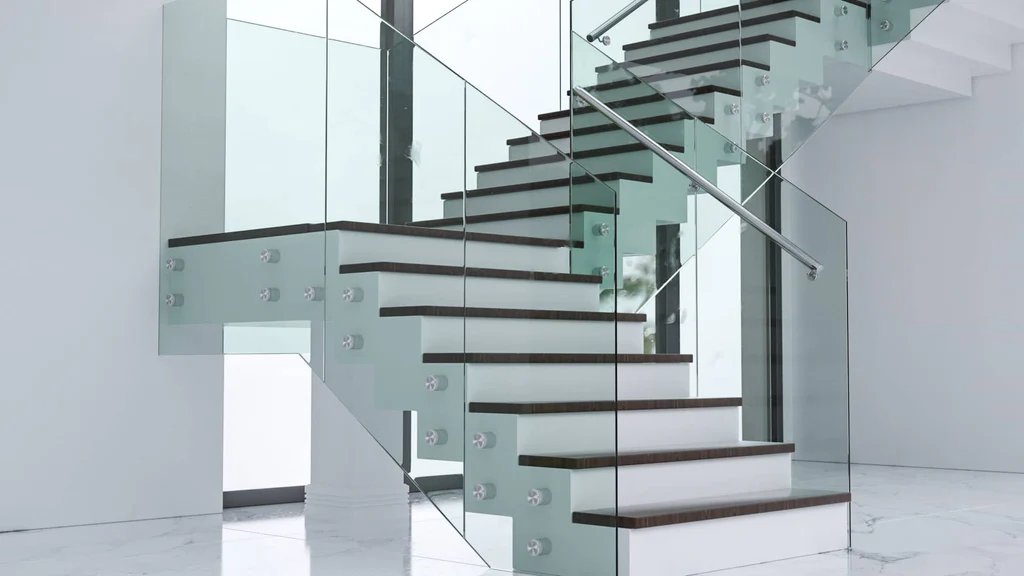
Glass Railings create a contemporary, luxury appearance. Clear or frosted glass panels provide an uninterrupted panoramic view, making spaces feel larger and more open. They complement modern architectural styles, especially minimalist or ultra-modern interiors and exteriors.
Both options enhance the beauty of outdoor spaces but cater to different visual preferences. For tightly spaced or urban environments, glass railings enhance openness more effectively, while cable railings offer a more casual yet sophisticated look.
Material and Durability
Cable Railings rely mainly on stainless steel cables and posts, often paired with powder-coated aluminum or treated wood. Stainless steel offers excellent corrosion resistance, particularly marine grade 316 for coastal areas. Proper maintenance includes checking cable tension and cleaning to prevent rust.
For premium cable railing components, explore stainless steel railing systems available at Urailing.
Glass Railings utilize tempered or laminated glass, highly resistant to impact, heat, and weather exposure, paired with stainless steel or aluminum clamps, standoffs, and railings. Glass is less prone to corrosion but requires regular cleaning to maintain clarity.
Consider products like glass clamp fittings and balustrade adjustable glass clamps from Urailing for high-quality installation hardware.
Pros and Cons of Cable Railings
Pros
- Minimalist design with unobstructed views.
- Durable and weather-resistant.
- Affordable compared to glass railings.
Cons
- Requires precise installation and tensioning.
- May not provide complete privacy.
Pros and Cons of Glass Railings
Pros
- Sleek and luxurious appearance.
- Provides a clear, unobstructed view.
- Highly durable and shatter-resistant.
Cons
- Higher cost compared to cable railings.
- Requires regular cleaning to maintain clarity.
Choosing the Right Railing System for Your Project
Your choice between cable railings vs. glass railings should consider specific factors such as budget, style preference, desired view openness, maintenance capability, and safety needs.
For a coastal property or high-use deck, durable stainless steel cable railings might be optimal. For luxury urban apartments or hotels, glass railings enhance both style and performance.
Explore Urailing’s full range of stainless steel railing systems or customize your glass railing setup with their cap rails and standoffs.
Summary
Choosing between cable railings vs. glass railings depends on your project’s priorities of budget, aesthetic style, maintenance efforts, safety concerns, and environmental setting. Cable railings offer a versatile, budget-wise solution with an industrial flair, perfect for open-air applications requiring airflow and a slight rustic edge. Glass railings deliver exceptional modern elegance and unimpeded views, ideal for urban or luxury settings demanding durability and minimal visual obstruction.
For top-quality materials, expert advice, and customizable railing solutions, visit Urailing’s comprehensive railing systems. Whether you prefer the sleek look of stainless steel cables or the crystal-clear transparency of tempered glass panels, Urailing has you covered with durable, premium railing options tailored to your architectural vision and regulatory requirements.
For personalized assistance, feel free to contact Urailing anytime.
FAQs
What is more cost-effective: cable railings or glass railings?
Typically, cable railings are more affordable in materials and installation, although maintenance may be slightly higher due to tension adjustments.
Are glass railings safer than cable railings?
Glass railings provide a solid barrier and are highly safe with tempered glass. Cable railings are also safe when properly tensioned but have small gaps.
How often do cable railings need maintenance?
Cable tension should be checked annually, with occasional cleaning to prevent corrosion, especially in coastal environments.
Can glass railings withstand harsh weather?
Yes, tempered glass panels and stainless steel fittings are designed for durability in harsh weather conditions.
Are cable railings child-friendly?
Horizontal cables can pose climbing risks, so precautions with child safety are important.

